
Review: Vivitek DK8500Z
4K Single-Chip DLP Laser Projector
Review:/ Christopher Holder
This is a 4K Special Issue, so it’s only fitting we bring a 4K installation projector in for questioning.
Easy? Not so much. There are very few commercial 4K projectors on the market. Vanishingly few.
Since some 12 months ago there have been a smattering of 4K home theatre projectors with brands such as Sony and Optoma making forays, but Old Mother Hubbard’s 4K cupboard is perty-darn bare.
Even this year’s ISE didn’t see a conga line of 4K projection announcements. A handful of vendors are addressing the events/rental market with 4K releases, such as Epson and Panasonic (think: White Night/Vivid and IMAG applications).
So it was with a certain amount of post-haste alacrity that Synergy (Vivitek’s Australian distribution partner) sent me the DK8500Z. Word was: I was the first person in Australia to spark up this bad-boy.
The device in question is a 7500-lumen, single-chip, 4K DLP laser projector. It’s a serious piece of kit. For starters it’s no lightweight — there’s not much change out of 30kg with the lens fitted.
After making a variety of old-man noises moving the box (‘why the heck is this thing so heavy?!’ — we’ll hear why later), my second immediate impression was: here is a serious piece of commercial AV equipment: plenty of lens options (eight, in fact, all with lens shift) and a professional array of I/O and control ports (including SDI, HDBaseT, RS232, ethernet, HDMI2.0 and DisplayPort).
After fitting a 1.25–1.79 lens (easy bayonet-style, insert/twist procedure) it was time to spark up the DK8500Z and bask in some UHD goodness.
Not so fast.
LASER TAG
The DK85000 uses a laser phosphor light source. Like the competition, Vivitek talks about a 20,000-hour life expectancy. Unlike some of the competition, because of a fully-enclosed, air-tight assembly (where dust can’t intrude) the 20,000 hours has real world practical implications. Vivitek has done its homework and at the time of going to press has made it to 12,000 hours of 24/7 use in tests and has found the lasers’ output decreases linearly and predictably at around (a miserly) 1-2% every thousand hours. All up, this is good news for a permanent install and good news for your power bill. Being laser, boot up/down time is also swift.
It’s not Vivitek’s first laser ‘rodeo’, the company has been producing laser projectors for a couple of years now. They’re equipped with an efficient liquid cooling system and the aforementioned airtight sealed optical engine in order to reduce the maintenance — no lamp replacements, and no need to climb a ladder to replace an air filter.
It’s worth giving credit where it’s due, so I’ll doff my cap to Delta (Vivitek’s parent company) for inventing the laser phosphor engine — Delta has a number of patents out and, in fact, is an OEM manufacturer, supplying laser phosphor engines to other industry players. Under the bonnet you have two blue laser diodes as the primary light source. The blue light from the laser diodes shines onto a spinning colour wheel coated in a phosphor compound. The blue light excites the phosphor, emitting yellow light. The yellow light is then segmented using dichroic coatings to create red and green light while the blue light component directly passes through a diffusion segment in the phosphor wheel.
MORE INFO
Price:
$29,999
Lens from: $1499
Contact:
Synergy Audio Visual: (03) 9459 7474 or www.synergyaudio.com
Specs:
Brightness: 7500 lumens
Contrast Ratio: 10,000:1
Weight: 28kg
Light Source: laser phosphor
Warranty: 5 Year projector / 3 years or 10,000h on the light source
8 optional lenses: from 0.377:1 to 5.31-8.26:1 throw ratio range
“don’t simply tar 4K with the pixel brush, there’s more to it, and it’s worth your investigation”
4K (DIS)CONTENT
In an AV world where you soon won’t be able to purchase a full HD display in favour of 4K, you might naively imagine that there’s a veritable cornucopia of pixel-enriched commercial content. Not so. There’s a dearth. An embarrassment of embarrassments. There’s a smattering on NetFlix; and a couple of cool commercially produced packages/teasers available on YouTube (which probably accounts for why you see the same old demo suspects on tradeshow 4K TVs all the time).
So it begs the question, if there’s hardly any suitable content to be had, who’s screaming for a 4K projector?
I’ve asked around, and not many people are.
It’s currently a niche requirement. But if you’re in that niche, then you need to know about the DK8500Z because, like Obi-Wan, it may be your only hope.
So where you’re dealing with 4K source video/graphics and you need to create a large canvas, then the DK8500Z has you covered. It may be a museum exhibit (yes, you can mount the projector any which way); or some specialised digital signage; exhibition/stand exhibit (made easier with this projector’s built-in multiscreen edge-blending and warping features); you may be fitting out a visualisation or simulation suite; or, more likely, an application that I’ve not yet considered that has come out of the clear blue sky and you were all set to advise your client to not bother and scale it down to 1080p. Like I said, now you have a commercial-grade 4K option that didn’t exist a few months ago.

HOW’S IT LOOK
Vivitek manufactures great projectors. It’s a respected brand, albeit one that’s not had a big presence in Australia (something Synergy is quickly addressing).
I ran 4K content and 4K test patterns via the DisplayPort output of a PC installed with a suitably-buff graphics card. I was impressed. It’s a great looking image.
Being a commercial AV magazine I’m not going to disappear down a rabbit hole of home theatre-style test bench nerdery. But I’ll make a couple of observations. A 4K image with four times the HD complement of pixels (see the TI DLP Chip box item) places greater stresses and scrutiny on lenses. In fact, you might be interested to know that a single 4K pixel occupies only 5.4 microns of lens real estate as it exits the projector. So the tolerances are indeed miniscule, and a less-than-perfect lens will result in image inconsistencies. Vivitek mills its own pre-optics and sources lenses from ‘name’ Japanese suppliers. The company is confident its lenses are up to spec and I was happy with what I saw in my tests. Investing in a high quality projection screen will also be rewarded.
I’ll also make an obvious observation regarding image size: with quadruple the pixel count of full HD, you can quadruple the canvas size and enjoy the same resolution.
And here’s where projection, especially 4K projection, will carve out a market share, especially as large-format LED screens’ resolution and pricing improve — providing big canvases and encroaching on the projector’s traditional turf. The bigger the canvas the more you’re likely to appreciate the extra pixels.
If the image is smaller, then you can make the observation that 4K’s resolution won’t be fully appreciated (the eye can’t resolve the finer detail without getting closer to that smaller image). True. But 4K is not all about extra pixels. The 10-bit colour palette and the contrast (along with the extra pixels) combine to provide a subjectively more immersive image. In other words, don’t simply tar 4K with the pixel brush, there’s more to it, and it’s worth your investigation.
ULTRA VIVID SCENE
This is a breakthrough projector. Vivitek has an undeservedly low profile in Australia and it’s cool to see it flying the Innovation Flag with the release of the DK8500Z. The chassis size, the brightness, the lens options, the mounting options, the I/O complement; they’re all hitting a sweetspot for a commercial install projector. Will it be immediately spec’ed into a thousand lecture theatres, no, of course not. Being cutting-edge 4K, this is a relatively expensive 7500-lumen installation projector; it’s a specialist projector. And in that regard the KD8500Z will introduce Vivitek to a small but impatient coterie of end users and integrators who have a pressing need for just such a projector. I’ve no doubt these projects will be well served by the DK8500Z.
4K TI DLP CHIP: 8.3M PIXELS?
4K image from a 4K chip, right? Not exactly. The Texas Instruments DLP 4K digital micromirror device (DMD) allows for full 4K UHD display solutions, ie. 8.3 million pixels on screen. But it doesn’t have 2160 lines of micro mirrors, it has a pixel/mirror complement of 2716 x 1528. If you do the maths, that amounts to half the 8.3m required. To achieve the required 8.3m pixels, the chip does a sleight of hand where it delivers two pixels one after the other through the same mirror using a 120Hz refresh rate (60fps per pixel). The total number of addressable pixels in this process is (2716 x 1528) x 2… or 8.3 million pixels, ie. native 4K resolution. This is called XPR technology, where an FPGA chip drives an actuator at 120Hz.
It’s a different trick to the Sony/JVC e-shift ‘two-step’ where the same pixel is reproduced twice in every refresh but jiggled slightly diagonally. The DLP ‘XPR’ method, on the other hand, provides independent control of colour, brightness and contrast per pixel.
Interestingly, TI also manufactures a larger 3820 x 2160 DMD, which is quite a bit more expensive. Vivitek’s sister company, DigitalProjection uses the full 4K chip in its range. In fact, it goes so far as to apply the aforementioned XPR technology to achieve an 8K image — the first projector, as far as I’m aware, to do so.
The DLP chip has a quoted 5000 lumens as its upper brightness limit. With TI’s co-operation, Vivitek ramps that up to 7500 lumens thanks to the unit’s liquid cooling, maintaining a temperature no toastier than 60 degrees.
Which helps explain why the DK8500Z tips the scales at a hefty 30kg (with its lens). The liquid cooling and pump along with the radiator fins (to dissipate the heat of the closed light source) go some way to accounting for the weight.

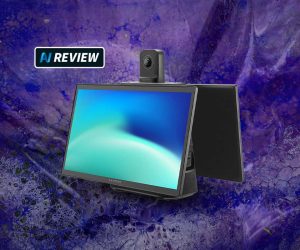


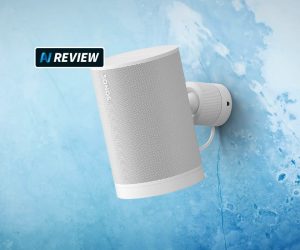

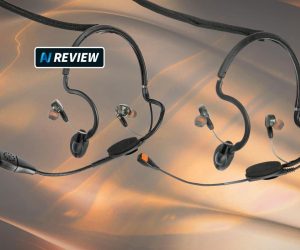
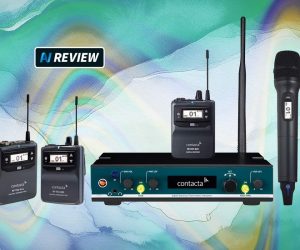



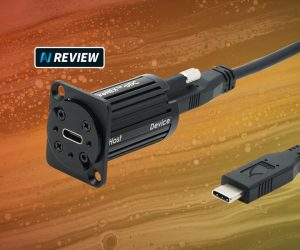



RESPONSES